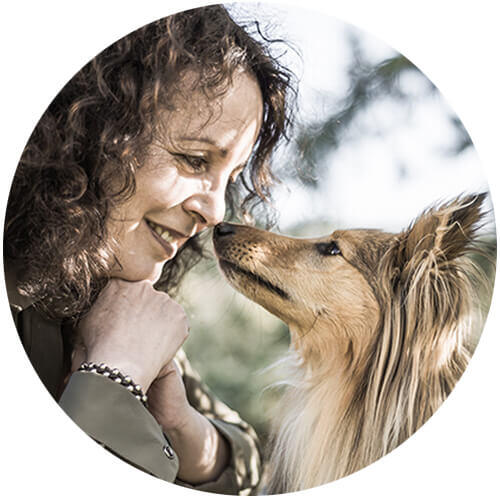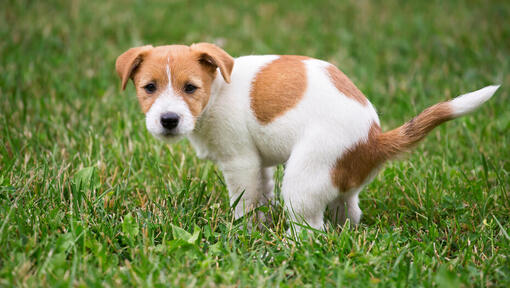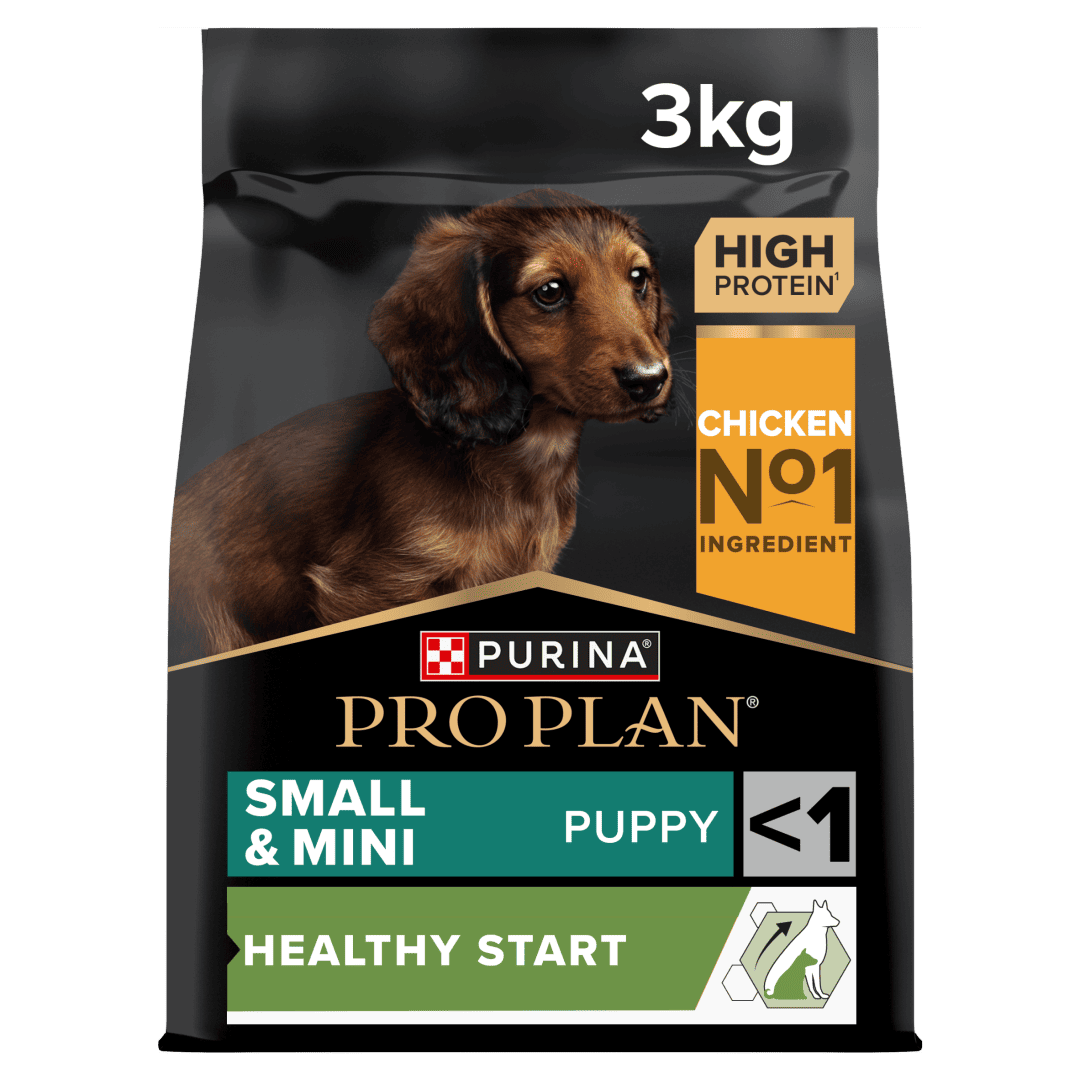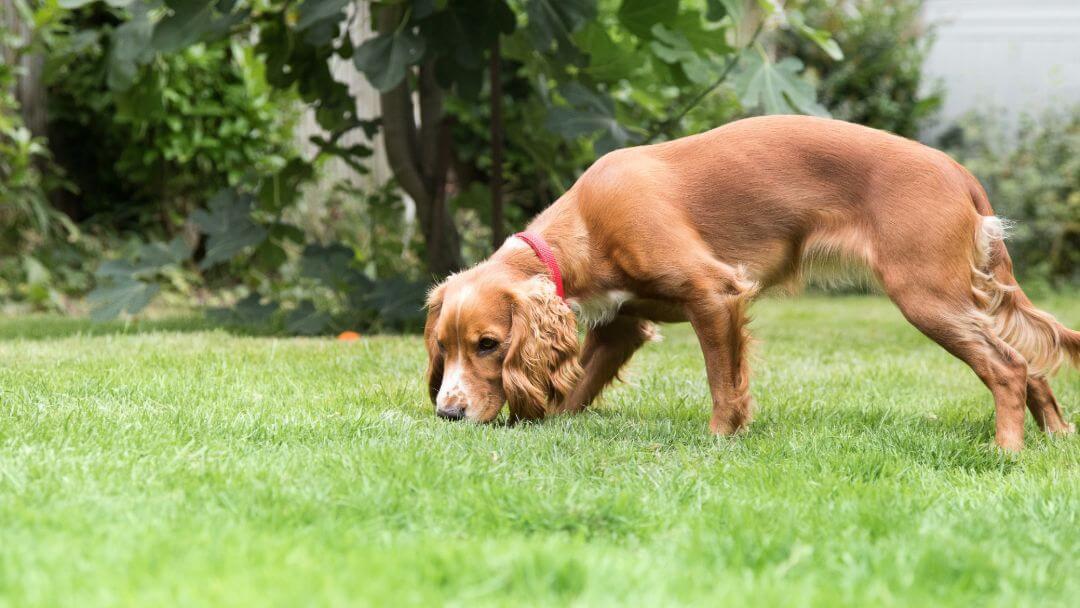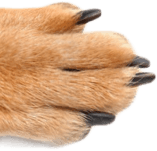


Bringing home a new puppy is such an exciting moment, and one you’ll never forget! Although there’s a lot to learn, one thing you’ll want to get started with as soon as they step paws into your home is puppy toilet training.
You’ll soon discover that puppies pee a lot – sometimes more than 12 times a day! It’s your job to guide them so they don’t make mistakes, work out when they need to go outside, and teach them what to do once they get there. And of course, reward them every time they get it right.
Keep reading to discover how to toilet train a puppy in 7 days (UK), how long it takes to toilet train a puppy and learn how to notice the warning signs of when nature calls. Remember, consistency is key!
When to toilet train a puppy
You should start toilet training your puppy from the first moment they come home. With puppies that have come from a breeder, this is usually around 8-9 weeks old – although in tiny breeds this might be 12 weeks old.
You want to teach them where the toilet is from the very beginning of your life together to prevent confusion.
If you’re training an older dog, you should also start as soon as they come home.
Designate their toilet area before they come home so everyone knows where they are going.
The importance of a toilet area during puppy toilet training
The toilet area should be close to the house and separately fenced from the rest of the garden. You ideally want to separate the ‘play’ part of your puppy-proofed garden and the ‘toilet’ part. makes it look and smell different to the rest of the garden, so your puppy will learn to recognise it and use it in preference to other parts of the garden.
This area should be grass as puppies like to go somewhere natural and soft (and absorbent) rather than concrete or paving.
An important part of toilet training a puppy is to keep their toilet area clean by clearing up every day. While the smell of the toilet area will encourage them to use that space, leftover mess can put them off, and they may look for other areas to do their business. No one likes a dirty toilet!
How long does it take to toilet-train a puppy?
It is almost impossible to predict as every puppy will take a different length of time to become fully toilet trained. With a medium-sized breed to large-sized breed puppy, and a lot of consistency and rewards (and you getting up in the middle of the night), they should be able to sleep through the night within a week or two – but they are still a long way from being toilet trained!
With a small breed puppy, this will take longer as their digestive systems are so tiny and not yet developed.
For most dogs, it will take between four to six months for your puppy to be fully reliable but it will depend on their size, age and ability to learn – and most importantly, on how consistent you are, how much you prevent mistakes and reward successes, and how mindful you are.
Some puppies can learn how to be toilet trained really quickly in only a few weeks, whereas for some dogs it may take longer and could be up to a year. Often smaller breeds take longer as they have tiny digestive systems and can’t hold on for very long, and dogs who have been reared in a kennel environment rather than in the home can also take a bit longer as they don’t yet understand the rhythms of the home or that there are places they are not meant to go to the toilet.
How to tell when your puppy needs to go to the toilet
There are some predictable times when you can be sure your puppy will need to go to the toilet. This is when they wake up, after a meal or a drink, after (or during!) a game – or if they get excited by something or someone. Take them outside at these times and be prepared to reward them with a treat when they pee or poo.
At other times, you can usually tell when your puppy wants to go to the toilet because they might start to look around, walk in circles and maybe start sniffing in suitable corners looking for a place.
That's your cue to take them outside. Calmly carry them out to the toilet area. Wait for as long as you need to – sometimes puppies can get distracted by the excitement of the great outdoors, no matter how much they wanted to go!
How to toilet train a puppy in 5 steps (daytime)
When considering how to toilet train a puppy it’s important that you follow these steps:
Step 1.
During the day, take your puppy out to your designated toilet area as soon as they wake up and after eating or drinking. Also take them out every hour or so.
Step 2.
Be prepared to wait for a while - toilet training takes patience and puppies are easily distracted.
Step 3.
Once they’ve been to the toilet, reward them with a treat and plenty of praise. The more opportunities you get to reward them when they get it right, the faster your toilet training will be
Step 4.
Give them lots of opportunities to go to the toilet in the right place
Step 5.
Never punish your puppy for accidents - it's not their fault that their needs haven't been anticipated. Any punishment will slow progress and also damage the relationship you are trying to build with your dog, so keep toilet training positive.
What to do during puppy toilet training
When it comes to any type of dog training, there are a few things that you should and shouldn’t do, here is a list of 4 things you should always remember to do when it comes to toilet training your puppy.
Do be patient with puppy toilet training
Once you’ve established a toilet area, take your puppy there routinely to let them use it and always then reward them with a treat. If they sniff around but don’t do anything, be patient… you might have to wait for a little while. If they still don’t go, bring them back inside and watch them carefully for their first five minutes. Take them outside again if you spot any warning signs of needing to go.
Do add in a cue word
It’s a good idea when puppy toilet training to introduce an accompanying cue word like ‘busy’ or ‘hurry’ as they are going to the toilet so you can use this word later to encourage them to go if you are in a new place.#
Don’t forget the rewards
Always, always reward successes. The more opportunities you get to reward your puppy for toileting in the right place, the faster your toilet training will be. This does mean that you have to go with your puppy every time (no matter what time it is or whatever the weather!) so you can see that they’ve been to the toilet and you can reward them immediately - so they know exactly what it is they have done right.
Do be consistent
For the first couple of weeks when house training a puppy, it’s your mission to take them out to go to the toilet as soon as they wake up, after they’ve had something to eat or drink, and every half hour while they’re playing. You always have to have your eye on them as well so you can spot their own tell-tale signals of needing to go.
Remember to reward them each time they get it right.
How to toilet train a puppy without a garden
When you've got a puppy in an apartment, getting them out in time can be a challenge! Therefore, it's even more important to recognise the signs when your pup is trying to let you know they need to go!
- Identify a suitable toilet area that you can get to quickly and easily - no matter what time of day.
- Taking them out every hour can help as it gives your puppy more opportunities to 'get it right' and get rewarded for that behaviour. Set a timer for every hour as a reminder so you don't forget!
- If you have no access at all to a suitable outdoor space, you can train them to use a litter tray or puppy pads in the same way that indoor cats will always toilet inside.
How to deal with accidents during puppy toilet training
Accidents in the house will happen - especially if you are not vigilant or get distracted. These are especially likely during the first few weeks of your training and while they still have very immature digestive systems, but if your puppy does go to the toilet indoors, stay calm, remind yourself that it is your fault, and remember that it’s all part of the learning process.
1. Clean it up quickly.
If you discover a little puddle or a mess, whether or not you were there when it happened, just clean it up without making an issue out of it. Use a purpose-designed enzyme-based cleaner (you can get these from your local pet store) rather than a more usual household cleaner - as while these will smell clean to you, to your puppy’s sensitive nose, it will still smell like a toilet.
2. Never get angry or shout
It’s unfair to punish your puppy for something that they can’t help and haven’t learnt any different yet (and might physically not be capable of yet). If you happen to catch them in the act, calmly take them outside to the toilet area to finish off what they’ve started, then clean the floor thoroughly so there’s no smell that your pet can associate with a toilet area.
The more work you put into toilet training a puppy - and the more chances you get to reward them for getting it right - the faster they’ll pick it up. Punishment will only damage this training process, can lead to behaviour problems - and will affect your relationship in the early days when they should be learning to trust you and that this new life is fun.
How to toilet train a puppy at night
The difference with night time toilet training is that you are asleep (hopefully!) and so can’t watch your puppy - and you are not going to want to take them outside every hour!
Thankfully most puppies will have learned not to soil their sleeping area before they even come to you. As soon as a puppy is able to go to the toilet unaided by their mother, she will encourage them to move away from the sleeping area when they need to go to the toilet. No one wants to lie on wet or soiled bedding, and well-reared dogs are no different. Breeders who rear their puppies in the house will usually have them in a large puppy pen, and the mother will designate where the sleeping place or places are - and where the toilet is.
This early learning is going to be really useful for your puppy toilet training - and if you restrict the area the puppy has to sleep in, they are more likely to try and ‘hang on’ a little bit so as not to make a mess of their bed, as their mum taught them.
Also being enclosed in a secure, comfortable area means they are not able to wander around potentially getting into hazardous situations, chewing things that you don’t want them to - or just amusing themselves - rather than learning that night times are for sleeping.
The easiest way to create a safe, comfortable, restricted area is either with a puppy pen or a crate – whichever you prefer. This should be set up beside your bed – both to give them comfort and also so you know when they wake up.
Here are some tips for puppy toilet training at night:
- Don’t make your puppy’s last meal too late – otherwise, they are definitely going to need to toilet before the morning! Don’t, however, reduce access to water. A puppy who has constant access to fresh water is unlikely to take great long drinks before bed anyway.
- Give them a chance to play and have a gentle game with you an hour or so before bedtime – movement stimulates the digestive system and they are more likely to toilet fully before you want them to sleep. Plus, a tired puppy is more likely to sleep for longer than one who has already been sleeping for hours before bedtime.
- In the last half hour or so before bedtime, let your puppy relax so they are fairly sleepy and then when you are ready to go to sleep, put them quietly into their crate or playpen and go to bed!
- Some puppies sleep better with a night light on, while others will settle better in the dark. Experiment.
- It may take them a little while to settle but resist the temptation to take them out and play with them - otherwise they will quickly learn to wake you up when they want a game!
- If they wake up, give them a little while to see if they will settle again. If not, they might well need the toilet.
- For the first few weeks, you will have to get up in the middle of the night (at least once) - so don’t let that come as a surprise to you!
- You have to remember that puppies only have small digestive systems (and if you have a toy or small breed, this is especially true) and no bladder control. Also, they may never have had to ‘hang on’ before. Your number one aim is to avoid accidents in the crate or playpen. Soiling their sleeping area is stressful for your puppy - and will have a negative effect on your toilet training. This does mean getting up in the middle of the night and taking your puppy out to go to the toilet. If they are a toy breed, you may well need to do this twice. One of the advantages of having them next to you is that you can easily hear if they are awake and restless which if they don’t settle straight away again is nearly always a sign of needing to toilet – plus puppies nearly always need to go to the toilet when they wake up.
- When you go out, carry them to the toilet area without much interaction, wait till they go to the toilet, reward them with a small food treat, and go straight back to bed. Try not to play or get involved in a game - otherwise your puppy will try and wake you up when they are bored! This is what they will have done with their littermates but you want to encourage them to learn that night times are for sleeping.
- Then you need to get up early and the very first thing you need to do before you do anything else is get your puppy out to the toilet once more. They will need to go to the toilet the instant they wake up - especially with the excitement of you being up and about.
It won’t take long until you can make the middle of the night toilet visit later and later, and eventually cut it out all together and your puppy will be sleeping through the night clean and dry. Don’t rush this though. Be guided by your puppy.
Always go out with your puppy
Most toilet training fails happen because the puppy doesn’t understand what you want – and you need to make sure they know that peeing or pooing outside is fantastic!
This means that you go with them every single time. Whether it is dark, raining, cold, the middle of the night…you need to reward them every possible chance you get at the exact moment they have finished peeing or pooing. They have to know exactly what it is they are being rewarded for – and every chance you get to reward them, means they will be even more likely to be successful in the future.
Puppy toilet training: Should I use a crate?
Lots of people don’t like the idea of a crate and there is no doubt they can be badly misused but used correctly at night time and beside your bed, it is nothing more than an enclosed, safe space that gives your puppy a 360° view all around them that you can use as a toilet training, and sleep training, aid.
It should be set up directly beside your bed so your puppy can’t wander off and get into trouble while you are sleeping, but they are next to you so you can hear if they awake and need to go out to the toilet.
If you don’t like the idea of a crate, you can use a pen (although sometimes it is hard to set them up small enough - and athletic puppies can climb out).
Some people prefer to have their puppy on the bed with them – or sleep on the floor beside them – but that usually means you get no sleep at all! Small breeds can sleep in an enclosed soft bed on your bed however if you prefer. It really is your choice.
Puppy crate training
If you choose to use a crate, you need to make sure you are using it properly.
Make sure you get a crate the right size. The puppy needs to be able to stand up comfortably, lie stretched out and be able to get up and turn round. It shouldn’t be so big however that they can use one end for sleeping and the other end as a toilet!
The same applies if you use a play pen for sleeping.
Every pup is different thought and so you need to be sensitive to your own dog. The crate should always feel positive and safe. Crate training should always be done with care and patience.
Thankfully most breeders will have already crate- trained their puppies (as it is a lot easier for them not to have puppies running riot around their house) and this will make things so much easier for you – so it may well be something you want to ask the breeder right at the very start.
NOTE: A crate is not something you use to lock your puppy away from you, to avoid paying attention to them, or to leave them. These can all lead to extreme behaviour problems. It is to keep them safe beside you.
How to toilet train a small-breed puppy
Smaller breeds can take longer to toilet train than larger breeds. Their bladders and digestive systems are tiny and they may also have a higher metabolism so they process food more quickly. They also are often rehomed slightly older as they can take longer to wean so they don’t get the early start on toilet training that larger breeds get.
They can’t physically hang on for long so owners have to be even more watchful and dedicated to their toilet training - and expect it to take longer.
Take the puppy outside often
Be sure to take your little puppy out as soon as they wake up, straight after eating or drinking, and after playtime. Ideally, you want to give your puppy plenty of opportunities to 'get it right', so aim for every 30 minutes during the day, to encourage this behaviour, and be sure to reward them.
Combine puppy toilet training with sleep training
Puppy toilet training is integrated with sleep training - as your puppy will still need to go out during the night in these first few weeks. If a puppy needs the toilet, they can’t sleep!
A large puppy should only need 1 (maybe 2 in the early days) additional outings during the night. Smaller breeds will likely need more frequent trips during the night-time period until they are a little older.
Try not to give your puppy much attention when getting them out at night-time – keep the process very quiet and functional (but don’t forget the reward) before putting them back to bed, so they don’t get into the habit of waking you up for fun!
How to deal with puppy ‘first fear phase’
Puppies often hit a totally natural developmental ‘fear’ period where they seem worried by things they had previously taken in their stride. This can affect training - including toilet training. This first fear period happens around eight weeks of age - although this varies with different breeds and individuals - and can last for a few weeks.
As a result, they may be less confident which can lead to puppies not feeling comfortable outside especially in the dark.
To help with this, make sure the toilet area you've chosen is quiet and close to the house with no distractions – and of course that you always go out with them.
Puppy toilet training should be reward-based from the start and totally stress-free.
Puppy toilet training and re-training
If you stick to a consistent puppy toilet training routine, your dog will soon learn to toilet outdoors. You may still get the occasional lapse but this is only natural, so don’t panic – just increase the number of visits outdoors for a while, and increase the rewards, until you’re confident your dog’s back on track.
Toilet retraining an adult dog
Of course, it’s not just puppies that need to be house trained. If you’ve rehomed a dog, they won’t automatically know where they’re expected to go in their new home.
You’ll need to learn when they need to go out, what their tell-tale signs are, and make a point of taking your dog outside on a regular basis - and never forget to reward them. Don’t just expect them to know what to do and where to go. Follow exactly the same programme as you would with a puppy until they understand where the toilet is in this strange new place.
So, now you know how to toilet train your puppy! Remember that consistency is key, keep your routine in place and before you know it, you’ll have a fully house-trained pup.
For more puppy advice and tips, read our puppy training guide.

